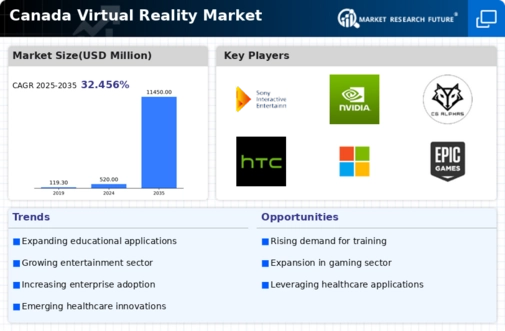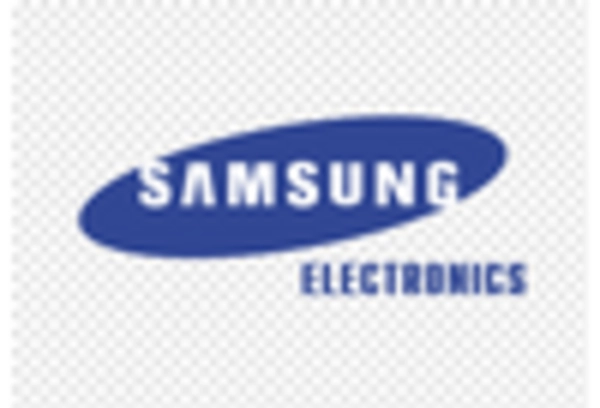Technological Advancements in Hardware
The virtual reality market in Canada is experiencing a surge due to rapid advancements in hardware technology. Innovations in graphics processing units (GPUs), head-mounted displays (HMDs), and motion tracking systems are enhancing user experiences. For instance, the introduction of lightweight, high-resolution HMDs has made virtual reality more accessible and appealing to consumers. As of 2025, the market for VR hardware in Canada is projected to reach approximately $1.5 billion, reflecting a growth rate of around 25% annually. This growth is driven by both consumer demand for immersive experiences and the increasing availability of affordable VR devices. Consequently, the virtual reality market is poised for significant expansion as these technological improvements continue to evolve.
Integration of VR in Corporate Training
The virtual reality market in Canada is witnessing a notable increase in the integration of VR technologies in corporate training programs. Companies are recognizing the potential of virtual reality to provide realistic training simulations that enhance learning outcomes. Industries such as manufacturing, healthcare, and retail are adopting VR for training purposes, leading to improved employee performance and safety. Reports indicate that organizations utilizing VR training can reduce training costs by up to 30% while increasing retention rates. This trend suggests that the virtual reality market is becoming an essential tool for businesses aiming to enhance workforce skills and efficiency, thereby driving market growth.
Government Support and Funding Initiatives
The virtual reality market in Canada is benefiting from increased government support and funding initiatives aimed at fostering innovation in technology. Various provincial and federal programs are providing financial assistance to startups and established companies developing VR solutions. For instance, the Canadian government has allocated millions in grants to support research and development in immersive technologies. This financial backing is likely to stimulate growth within the virtual reality market, encouraging the development of new applications across sectors such as education, healthcare, and entertainment. As a result, the market is expected to expand as more companies enter the space, driven by this supportive environment.
Rising Interest in Gaming and Entertainment
The virtual reality market in Canada is significantly influenced by the growing interest in gaming and entertainment. As gaming technology evolves, consumers are increasingly seeking immersive experiences that virtual reality can provide. The Canadian gaming industry is projected to generate over $3 billion in revenue by 2025, with a substantial portion attributed to VR gaming. This trend is further supported by the increasing number of VR titles being developed, which cater to diverse audiences. The virtual reality market is thus benefiting from this heightened interest, as more gamers invest in VR systems to enhance their gaming experiences. This shift towards immersive entertainment is likely to drive further growth in the sector.
Growing Demand for Virtual Reality in Tourism
The virtual reality market in Canada is experiencing growth due to the increasing demand for VR applications in the tourism sector. As travel experiences become more competitive, tourism operators are leveraging virtual reality to offer immersive previews of destinations and attractions. This innovative approach allows potential travelers to explore locations virtually before making travel decisions. Reports indicate that the use of VR in tourism can enhance customer engagement and satisfaction, leading to increased bookings. Consequently, the virtual reality market is likely to see a rise in investments from tourism companies seeking to differentiate themselves in a crowded market, further propelling growth.

















Leave a Comment